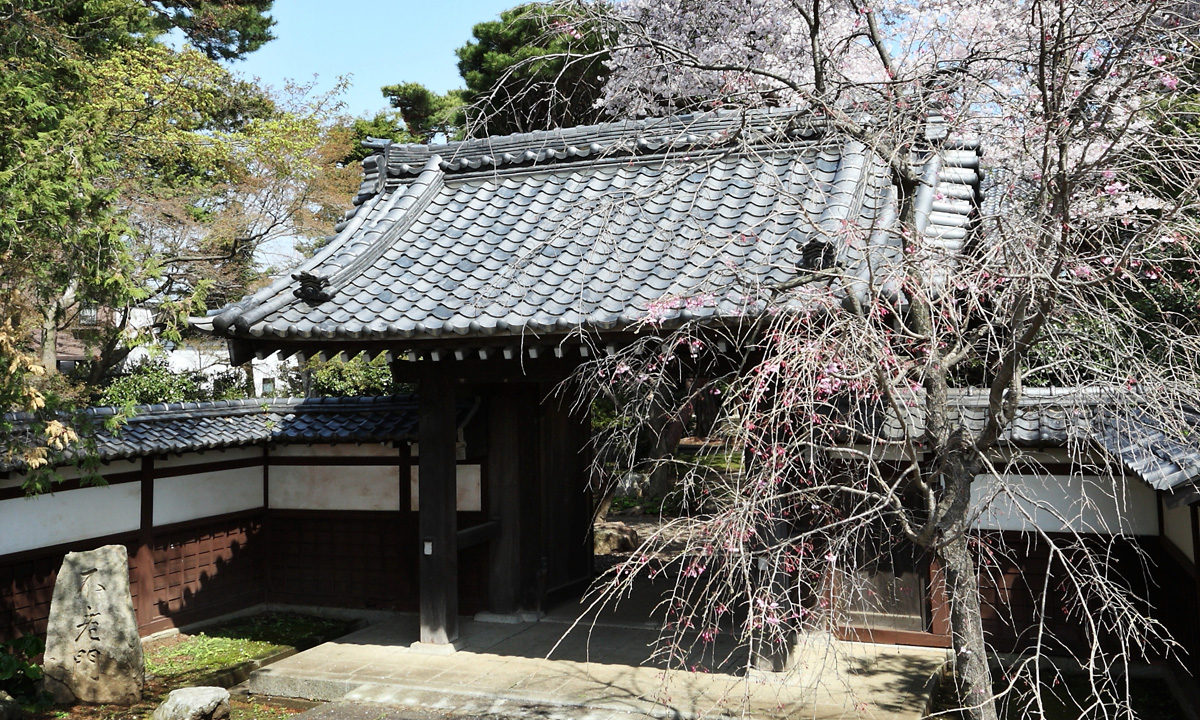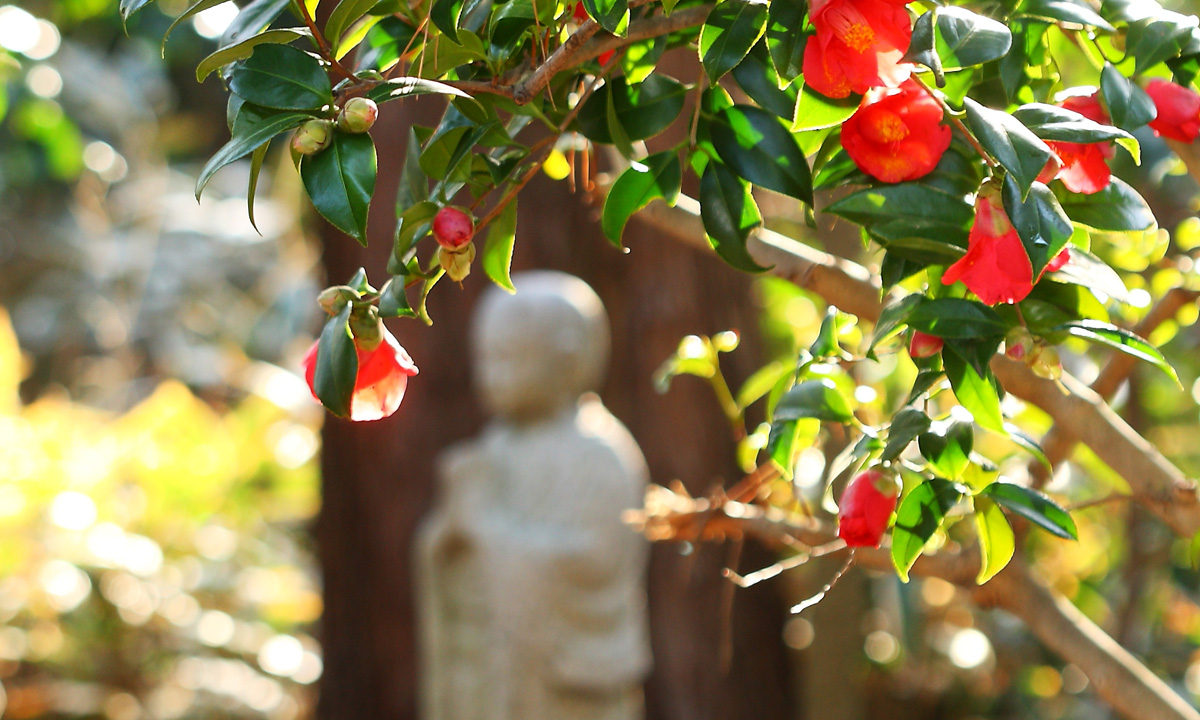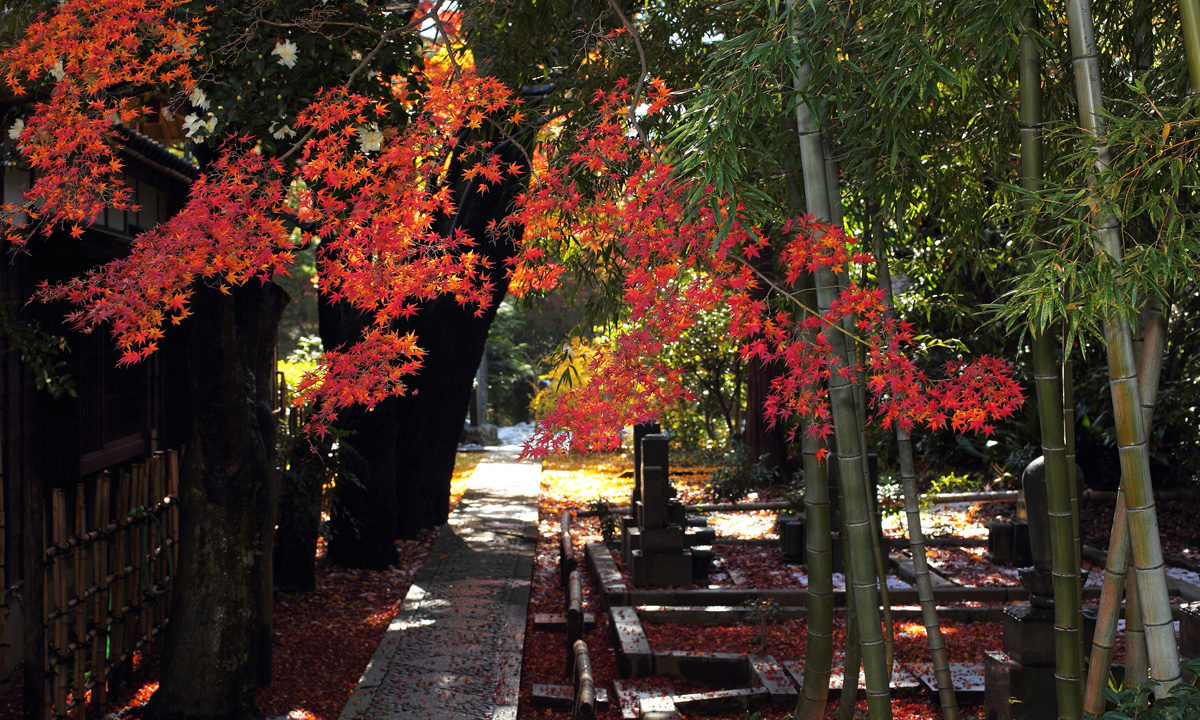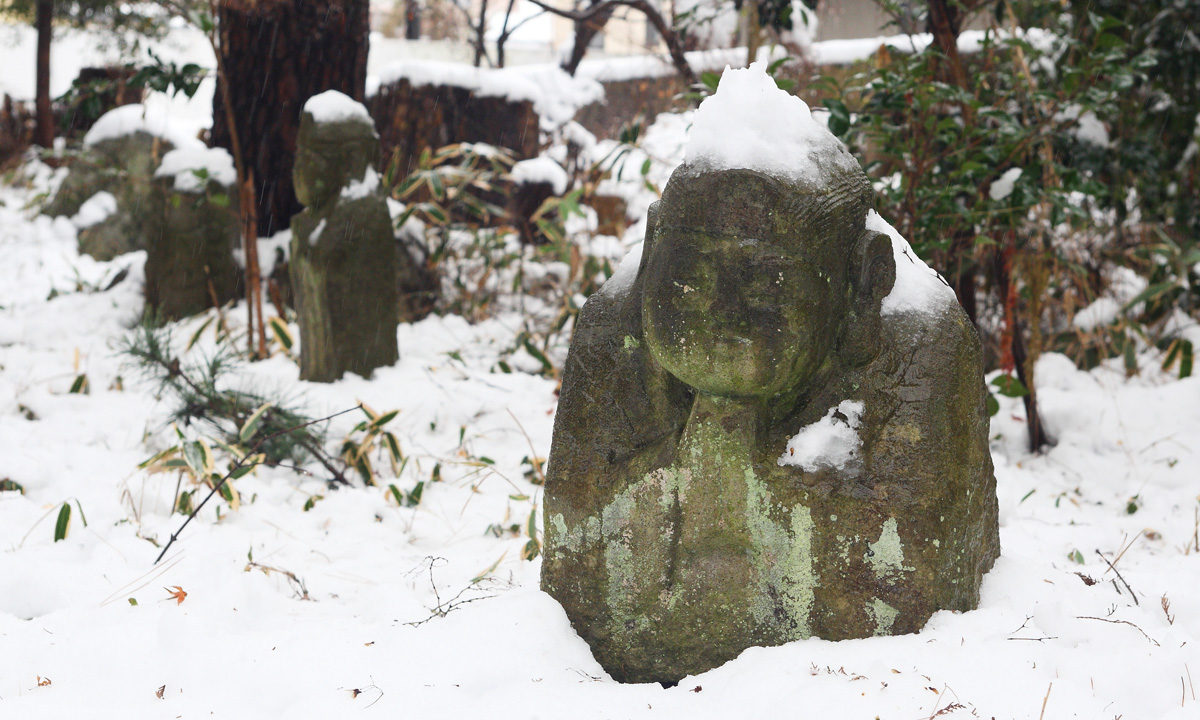- Water dropwart and dried daikon radish strips in sesame dressing -
photo:AKIRA MORIYASU
March (Yayoi)
<Flower Course>
Matcha green tea and a monaka featuring the gentian flower crest of Sankō-in
A monaka is a wafer cake filled with red bean paste.
Nishime, or simmered food
Mountain yam rolls, boiled kōya-dofu (freeze-dried bean curd), burdock root with sesame dressing, and boiled pumpkin, garnished with a celestial bamboo leaf.
Sesame Tofu in a starch sauce
A staple of shōjin cuisine, characterized by its white sesame aroma and smooth texture.
Water dropwart and dried daikon radish strips in sesame dressing
Kōei Tofu
Cherrywood-smoked tofu. This signature dish was perfected by this temple’s abbess Kōei.
Kogarashi (literal translation: cold winter wind)
An eggplant dish, in the Kyoto style of oden (also known as a dengaku), with miso on top, and sprinkled with yuzu peel from the temple garden. The name of this dish was conceived by abbess Kōei after a biwa belonging to the empress-turned-nun Taira no Tokuko, because the shape of the sliced eggplant is similar to that of the biwa.
Arare soup (suimono, or clear soup)
Arare is a type of snack food that is common around Hinamatsuri, the girl’s festival. This soup is prepared with several small shiratama mochi in the broth, in a style reminiscent of arare.
Osumoji made with nanohaha
Osumoji is the word historically used among noblewomen to refer to sushi. This is a roll containing nanohana, or rape blossoms.
<Moon Course>
In addition to the dishes listed above, there is an oden of millet fu. Fu is gluten.
<Snow Course>
In addition to the dishes listed above, there is konjak tempura; and Takenogosho-style sip tea.
*Dishes are subject to change and may not be exactly according to the monthly menus.
All courses are available by reservation only.





.jpg)